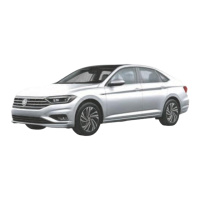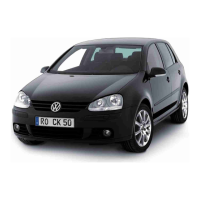reacts, or reacts only to a limited extent, when it is
use child seats or cushions.
•
Always ensure that all occupants of the
vehicle, especially children, are wearing their
seat belts correctly.
of their place of work.
Dangers of not wearing a
seatbelt
Please note at the beginning of this chapter
on
page 37.
Fig. 24 Vehicle about to crash into a wall. Occupants
not wearing seat belts.
Fig. 25 Vehicle colliding with a wall. The occupants are
not wearing seat belts.
It is easy to explain how the laws of physics work in
the event of a head-on collision: as soon as a
vehicle starts moving, so-called "kinetic energy" is
generated in both the vehicle and its occupants →
fig. 24.
The higher the speed and weight of the vehicle, the
greater the energy that must be absorbed in the
event of an accident.
However, the most important factor is the speed
of the vehicle. For example, if the speed is doubled
from approx. 25 km/h (15 mph) to approx.
50 km/h (31 mph), the corresponding kinetic
energy quadruples!
The magnitude of the 'kinetic energy' depends
primarily on the speed at which the vehicle is
travelling and the weight of the vehicle and its
occupants. The higher the speed and the greater
the weight, the more energy must be absorbed in
the event of an accident.
The occupants of the vehicle who are not wearing
seat belts are not "attached" to the vehicle.
Therefore, in the event of a frontal collision, these
people will continue to travel at the same speed as
the vehicle was travelling before the collision until
something stops them! Since the occupants of the
vehicle in our example are not wearing seat belts,
in the event of a collision with the wall, all the
kinetic energy of the occupants will be absorbed
by the collision alone → fig. 25.
When travelling at a speed between 30 km/h
(19 mph) and 50 km/h (31 mph) approx.
The forces acting on the body in the event of an
accident can easily exceed one tonne.
(1000 kg or approx. 2200 lb). The forces acting on
the body increase the higher the speed at which it is
driven.
This example is not only valid for border accidents,
but also for all types of accidents.
and collisions.
Please note at the beginning of this chapter on
page 37.
Fig. 26 The unbelted driver is thrown forward.
Frontal accidents and the laws
of
physics

